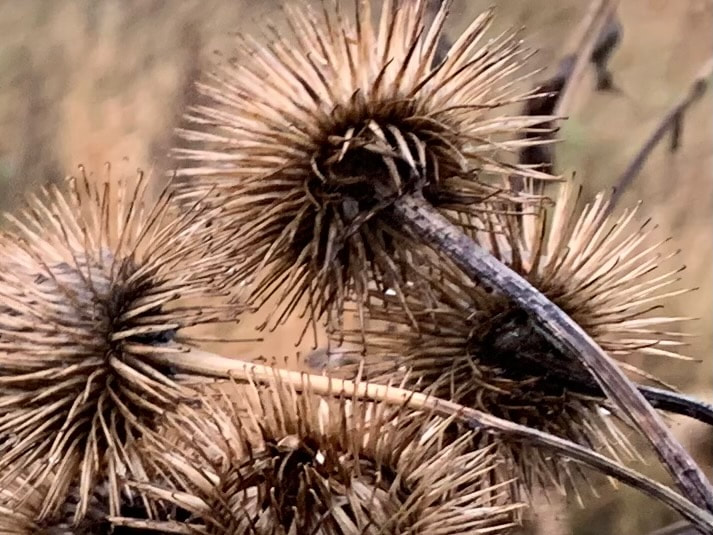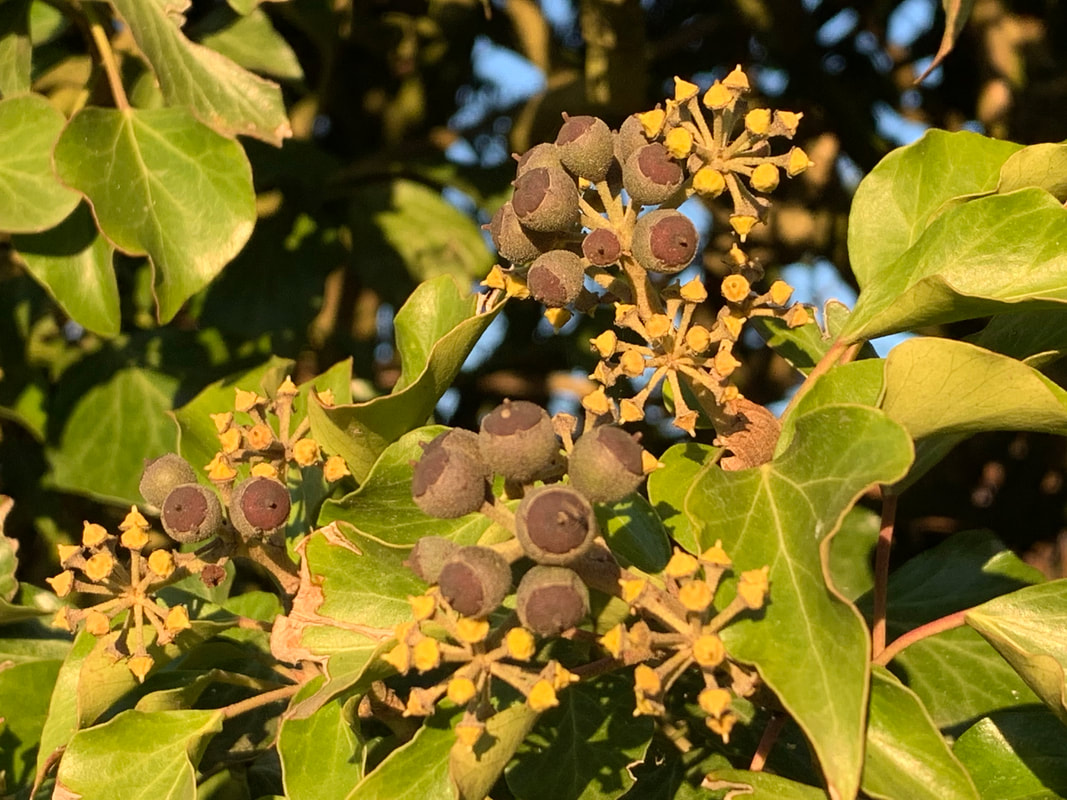Wildlife to watch in December
|
Burdock
The flower heads of Burdock appear from July to September and are attractive to a range of insects, including Painted Lady and Small Tortoiseshell butterflies. The crochet hooked seed heads of Burdock known as burrs help the plant to disperse its seeds by attaching themselves to the fur of passing animals. Did you know that in 1941, George de Mestral noticed that Burdock burrs kept sticking to his dog’s fur. He spent the next decade with a microscope investigating how the barbed, hook-like seeds engaged with the ‘loops’ on his trousers. In 1955, he filed the first patent for the hook and loop fastener, called VELCRO inspired by the Burdock burrs sticking to his dog. |
Ivy
|
Ivy is an evergreen, woody climber which can grow to a height of 30m. The juvenile form has climbing stems with specialised hairs, which help it stick to surfaces as it climbs. They actively grow away from the light and towards shade (a rare feature called negative phototropism), in the hope that this is being cast by a tree trunk, wall or other upright feature.
Over time, as ivy matures, it can develop into the thick blanket of ivy we see clothing old trees. It can also be self-supporting. Ivy begins to flower in August and continues into December. The blooms, carried in small umbels, are rich in nectar and pollen and are highly attractive to pollinators of all sorts, being especially valuable for insects looking to prepare for hibernation. The berries ripen soon after, turning bluish-black, and are eaten by thrushes and blackbirds. Ivy was a symbol of fidelity, so priests would present a wreath of ivy to newly married couples. Today it is still the custom for bridal bouquets to contain a sprig of ivy. |
Also look out for:
Muntjac Deer
|
This tiny non-native deer is the smallest in Britain and has copper-brown fur, with darker markings on the legs and face – which vary depending on gender. Muntjac deer don't have a fixed breeding season, unlike many other deer. Instead, they reproduce continually throughout the year. This small and exotic looking deer can be surprisingly hard to spot, although a loud barking call could indicate one is nearby. Woodlands are their preferred habitat, but they are increasingly found in gardens and even walking down streets. |
Spindle Tree
|
Mature Spindle Trees grow up to 9 metres and can live for more than 100 years. The bark and twigs are deep green, becoming darker with age, and have light brown, corky markings. The plant can be identified in winter by the vivid pink fruits which have bright orange seeds.
The leaves are eaten by caterpillars of a number of moths, including the magpie, spindle ermine, scorched carpet and a variety of micro moths, as well as the holly blue butterfly. The flowers are a rich source of nectar and pollen for insects, particularly the St Mark's fly. In some areas, it was also thought that if the Spindle flowered early, an outbreak of the plague was likely. |
Robin
|
Although often associated with winter as the focal point of many Christmas cards, robins are around all year in woodland, scrubland and parks in the UK.
They are very territorial, protecting their area with a loud song and fighting off intruders. The robin's bright red breast makes it extremely unlikely to be confused with any other small birds. Males allow females into their territories during the breeding season where she creates a nest, preferring ivy or another shrub. |
Bracket fungus
Go to next month's wildlife






